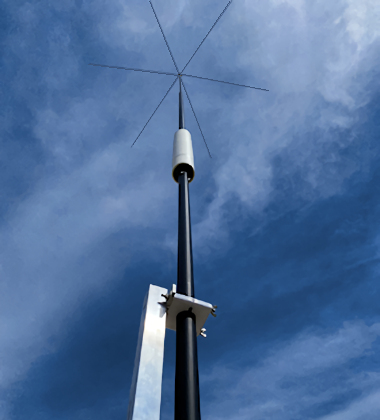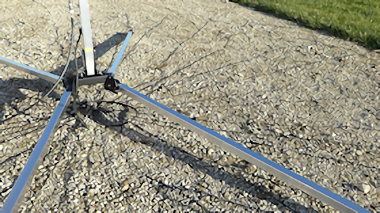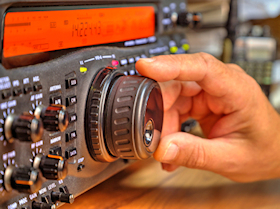
 |
| Shutterstock Graphic |
| Amateur Radio Receives FCC Waiver to Communicate with Military Stations |
| At the request of
the American Radio Relay League (ARRL),
the FCC has granted HAM Radio operators the opportunity
to communicate with federal stations December 6-9 –
dates that include Pearl Harbor Remembrance Day on
December 7. This year marks the 82nd anniversary of the
Japanese attack that killed more than 2400 Americans
and drew the United States into World War II. Generally, Section 97.111(a) of Commission rules limit transmissions between amateur radio and federal stations. But the FCC has acceded to the ARRL request in order to test, especially, communications between amateur radio operators and the US Military, which supports this test of cross-band operations. The FCC states that the exercise “presents a unique opportunity for amateur and military communities to practice communication skills under the guidance of military officials, which may be useful in the future and serves public interest," saying, “This day has historic significance and emphasizes the importance of reliable communications and the need to be vigilant in our national defense.” Amateur operators must follow FCC rules including mode, maximum power and license class and are limited to three identified federal frequencies:
|
 |
| “Since a 630m antenna and accessories are now available to the public, then I suppose marketing of the 630m band itself as a 'strong signal ground wave local service' (or some such) is the next step. I think local repeater clubs would be receptive to the notion of an MF alternative to the VHF/UHF they now use for local Amateur service. I definitely know that it's reasonable to expect 630m at 5w EIRP to provide reliable local coverage somewhat akin to that provided by FM repeaters. This is fertile ground for utility minded operators rather than experimenters, with the added benefit that a robust population of efficient local ground wave operators provides only that many more stations for the night-time DXers to work, and vice versa. A win-win for everyone.” |
| Clark Ackison AA8SH Huntington, WV |
 |
| High Marks for 'The Lowdown' |
| New 630 Meter Antenna
Raises Eyebrows; More Products and Accessories on Horizon |
| ZEELAND, MI:
Imagine petitioning your Homeowner’s Association (HOA)
to install a 500 ‘ antenna tower in your backyard! Yet,
that would be the size of the ¼ wave antenna you would
need to work the new 630 meter HAM band at 472-479 kHz.
Enter “The Lowdown,” a short whip antenna and 10’
groundplane, designed to be set up and taken down in an
evening. “I was astonished,” says Ralph Taggart (WB8DQT), Professor Emeritus at Michigan State University. Taggart purchased The Lowdown Antenna in 2023 with the intent to review it for various HAM Radio trade journals. “There is a lot to learn on this vintage band and this [testing of The Lowdown Antenna] has been painless and fun." HAM Radio Enthusiasts were allowed on the new band in 2017. The challenge: 630 meter frequencies with their long wavelengths – below the bottom of the AM band – have required home-built equipment and huge long-wire antennas, until now. Supplier Information Station Specialists introduced "The Lowdown Antenna" and an optional impedance matcher a few months ago and is proposing to next offer a filter and a linear amplifier so amateurs with existing transceivers can get on the air. The Company welcomes commments. Meanwhile, Professor Taggart has been collecting QSO contacts on FST4 and WSPR digital modes on the band with impressive results. Read Ralph Taggarts’ recent review of The Lowdown 630 Meter Antenna. |
 |
| The Lowdown Support Stand and Groundplane |
 Update
Update |
| Ten Years in the Making |
| In response to
the American Amateur Radio Relay League’s (ARRL) 2013
Petition for Rulemaking, FCC in November issued a Report
& Order that eliminates the baud rate (300) limit on
most HAM Radio Bands 160 meters and above and replaces
it with a 2.8 kHz bandwidth restriction. In lifting the
rate restrictions, FCC reiterated that “The amateur
radio community can play a vital role in emergency
response communications but is often unnecessarily
hindered by baud rate limitations in the rules.” In a further notice of rulemaking (FNPRM), FCC also proposes the lifting of similar restrictions on the 630 and 2200 meter HAM bands and is seeking comment on what bandwidth restriction(s) would be appropriate on those bands. For more information see FCC Report & Order FCC-23-93. |
| Short Sighted? |
| A group of financial firms calling itself the “Shortwave Modernization Coalition” filed a petition (RM-11953) to amend the Part 90 Rules to allow the use of 20 KW fixed transmitters in the 2 – 20 MHz band to transmit data streams from point to point. |
 |
| Shutterstock Graphic |
| In the reply comments received, ARRL submitted that
“many of the subject Part 90 bands are immediately
adjacent or very near to spectrum bands that are
allocated to the Amateur Radio Service on a primary
basis.” ARRL stated that its laboratory conducted
studies that showed that the proposal result would
present
“…harmful interference to many users of adjacent and
nearby spectrum, including amateur radio licensees.”
Many hundreds of licensed HAM radio operators filed in opposition to the proposal and questioned if such a service truly served the public interest. The US Coast Guard also filed in opposition, reminding the FCC that the their Maritime Mobile Services make extensive use of the 2-20 MHz band for “mobility, safety and security” – critical lifesaving operations. |
PO Box 51, Zeeland, Michigan, USA, 49464-0051, Phone 616.772.2300, Email
• • •